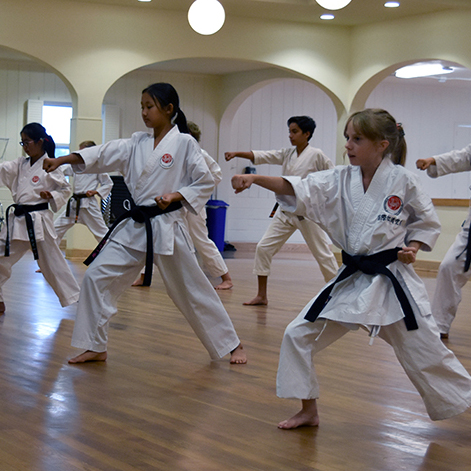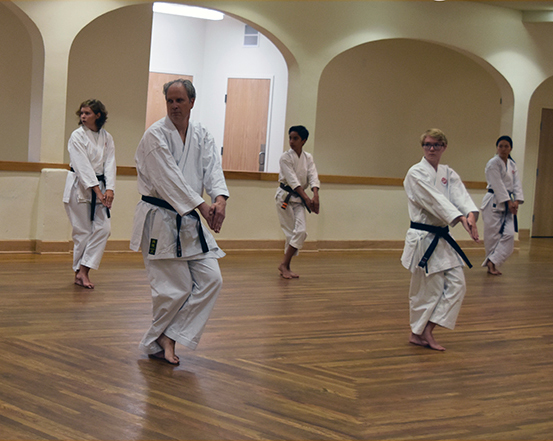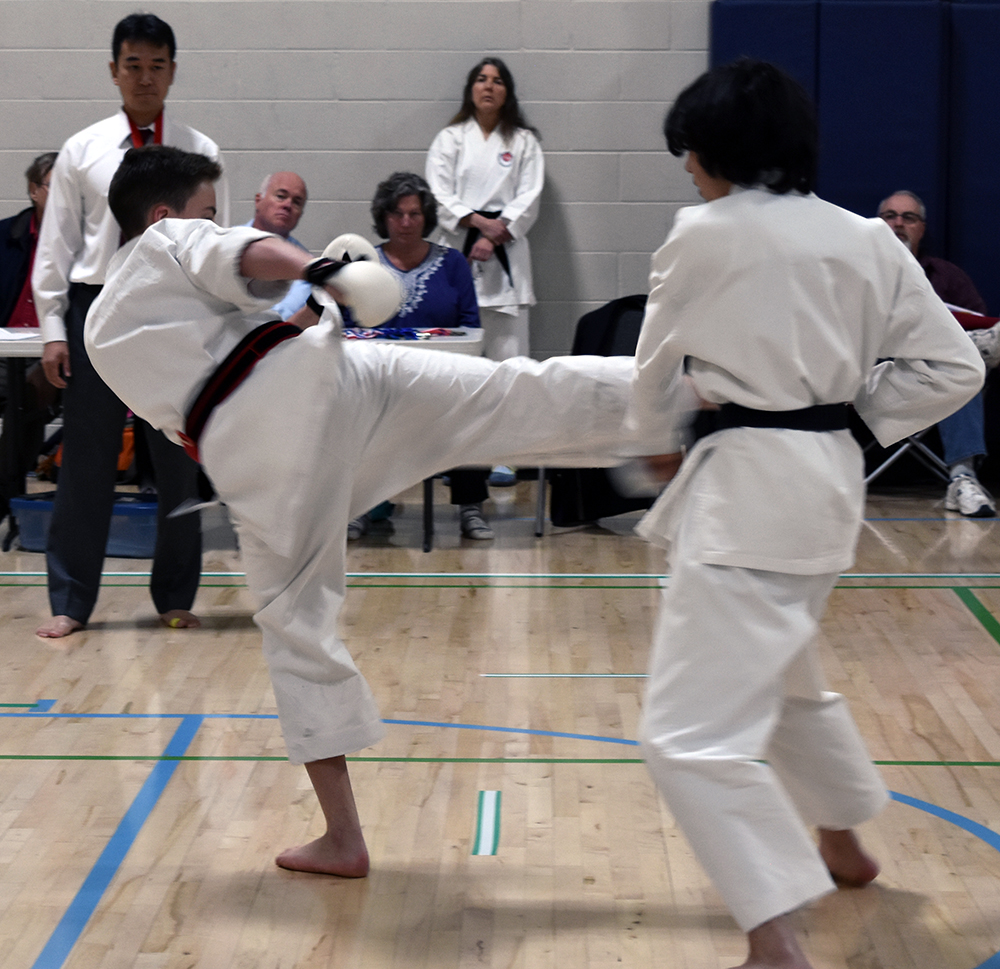Karate training has a variety of forms, each with their own purpose. In the Shotokan Karate class at ISKF of Fort Collins, we want you to experience as many of these forms of training as possible, as each one enhances your karate. Regular Karate classes can be broken into 3 major types of training: Kihon, Kata, and Kumite. In addition to these regular types of training there are special types of training such as testing and tournaments.
In a regular Shotokan karate class, three main aspects of karate training are emphasized:

Kihon - Basics/Combinations
Kihon, or basics, involves learning how to make a technique and improving the execution of a technique. This can be as simple as doing a single technique in place, or practicing a complicated combination of techniques and shifting. The goal is to try and perform the techniques as efficiently and effectively as possible, and it is a never ending lesson. Kihon training is a great chance to build strength and muscle tone as well.

Kata - Forms
Kata are prearranged sets of techniques. There are 26 kata in the Shotokan syllabus. Kata training is used to further train your body to execute techniques while moving and shifting.
In addition to this body training, kata training helps to develop an understanding of how karate can be applied in a variety of situations. During kata practice, a common recommendation
is to envision being surrounded by enemies, and think of how each move of a kata can be used to handle an attack from one of the surrounding opponents.
Bunkai training is an extension of kata training that involves practicing individual moves with a partner. In addition to increasing understanding of Karate techniques and their potential applications,
kata is great for building strength and endurance.

Kumite - Sparring
Kumite training involves executing attacking and blocking techniques against an opponent. It can take a variety of forms, from 3 or 5 step sparring in the early stages to free sparring at advanced ranks. In the early ranks, step sparring is used to allow participants to become accustomed to defending and attacking while beginning to learn about their ideal distance and how to adapt to an opponent's timing. At intermediate ranks, single step and semi free sparring are used to refine specific attacks and defenses, as well as to allow participants to learn about different types of offensive or defensive shifting. Finally, at advanced ranks, free sparring is used to tie everything together. Kumite training is critical for developing confidence in techniques. At the higher ranks, kumite training is also an excellent cardio workout.
Special Training - Testing and Tournament
While testing and tournaments are never required, they are important aspects of Karate and warrant a special mention. Both types of training allow you to get further feedback on your karate, and more importantly they force you to submit your karate to viewing and critique. This helps you develop confidence in your abilities, and a willingness to demonstrate them when called upon. Competition is never required of our students, but it is encouraged. Winning or losing are not the important part of the training. Getting out there and executing your best possible karate in a potentially stressful situation is the goal of the training.
That being said, we do not generally offer any special tournament oriented training at the ISKF of Fort Collins Shotokan class. When competition training is offered, it generally consists of the same training regimen normally practiced, just at a noticably higher intensity. The goal is to make your Karate better, not to train you to "win" under a given competition's rules.
In addition to the confidence building exercise represented by testing and tournaments, these special trainings also give practitioners a chance to see the skills of others that they may not regularly train with.
